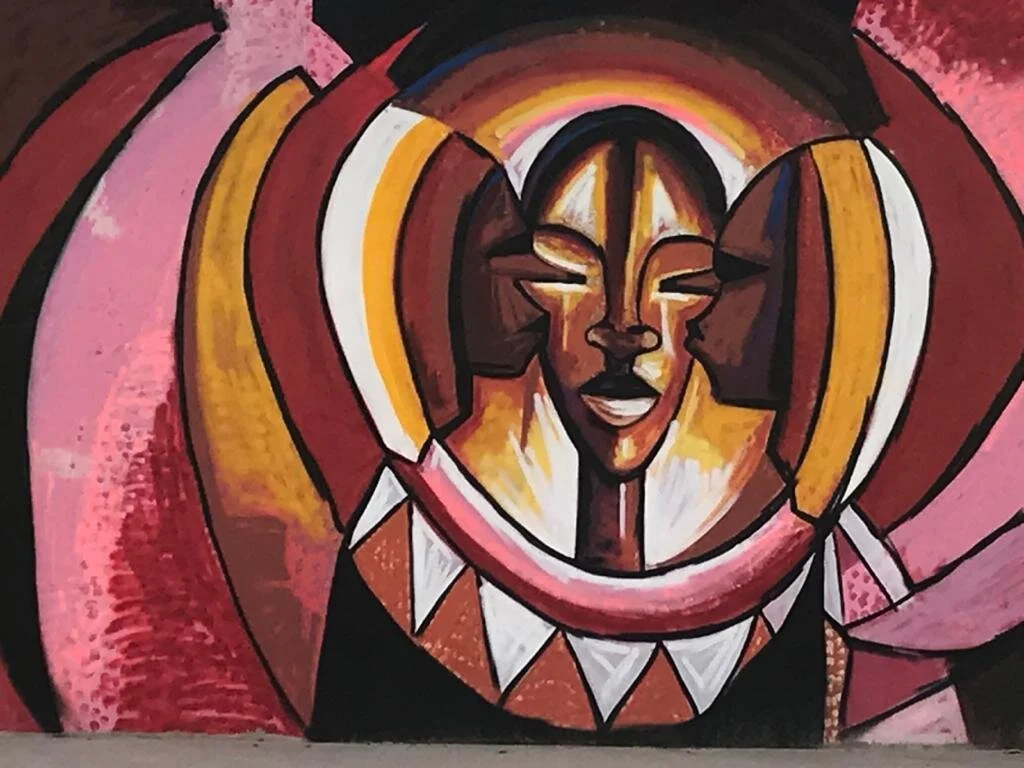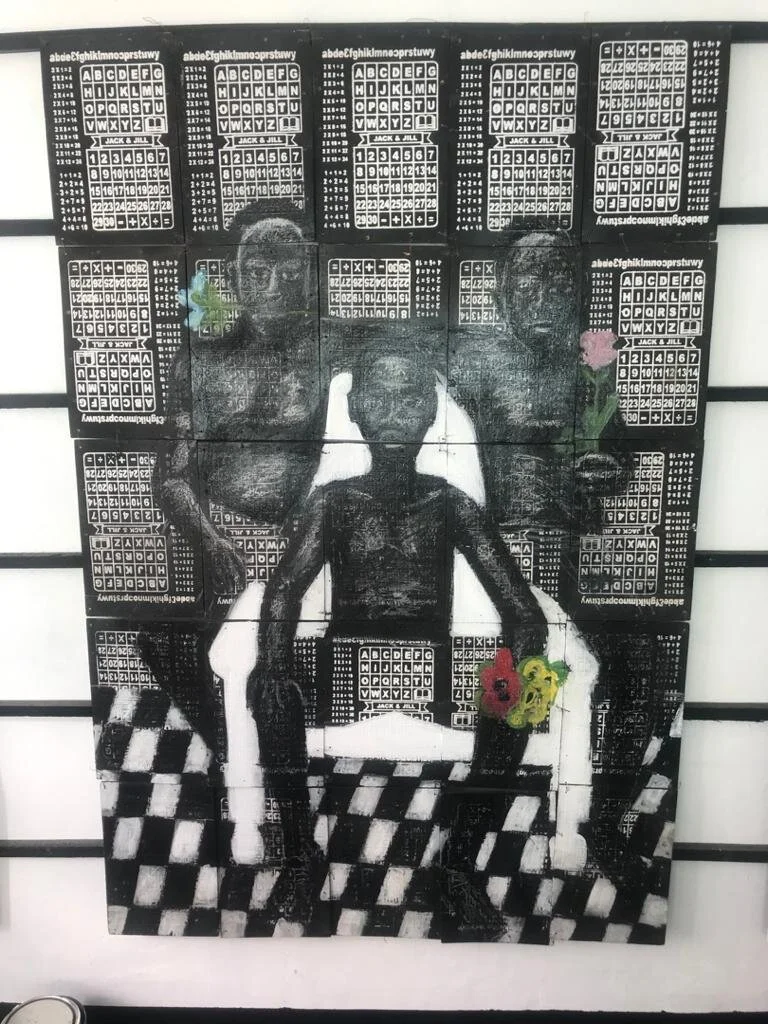Art Speaks Louder Than Words. In Conversation with Artist & Social Entrepreneur, Isaac Konney.
The African proverb which says that “music speaks louder than words” rings true also for the depth of emotion which speaks through the captivating artwork by contemporary Ghanaian artist, Isaac Konney. The 34-year-old loves to use chalk on learning boards or slate to set the scene for a litany of stories he’s amassed generationally and communally over the years. Indeed, Ghana’s art scene has long been etched in our everyday but increasingly, it is gaining both local and global acclaim. Locally, Accra has recently opened its doors to a new gallery at The Kempinski Hotel, the Amba Gallery by curator Amadu Baba and pre-Covid, Ghana exhibited for the first time at the Venice Biennale in 2019. The world is taking note of African art more broadly too: auction house Sotheby’s recently held its third Modern and Contemporary African Art sale in which sales reportedly exceeded its target by 40% (USD3.7m) and drew in buyers from over 30 countries[1]. In our tete a tete with social entrepreneur Isaac recently, we talked about the strength that’s derived from authentic storytelling, the intersection between art and education and where the challenges and solutions lie for artists in Ghana.
In the beginning.
Describing himself as “100% Ga, born in Osu”, Isaac shares candidly that his life-story and the stories of others around him are the inspiration behind what he projects onto his form of canvas. He admits that his upbringing was “quite tough”, raised by a single mother as the first-born from a family of five. He speaks of how he was “raised in the slums” and how he sold “bofrot[2]” to support his mother and see him through his education. And almost divinely, his early enterprise is what led him to a certain Mr Maxwell, an artist who had a penchant for bofrot and who would later become his mentor as Isaac recounts how he would go and watch him paint. Now, Isaac says humbly and assuredly, Mr Maxwell now says that his former mentee has “surpassed him”.
Isaac’s sharing of his upbringing isn’t a romanticised story of hardship to heroism but rather an honest account of how his context is chalked on each installation he creates. “I see myself in all [my work]” he shares, as we gaze upon the black and white images of his collection entitled “To Be Young, Strong & Black”.
Education: in black and white
It was Isaac’s use of colour which caught our attention in the first place. His beautiful and captivating murals along a stretch of road in Ako Adjei, Osu, depict African femininity in all its glory yet it’s his shading technique on learning boards using chalk and charcoal for which he really wants to cut a name for himself. He uses these materials “because they are educational mediums” in which he tells the story of everyday, young men and boys of the La Dade Kotopon district of Accra.
Isaac opens his studio doors to the young boys in his Kaklamadu community, to take them off the streets and to nurture their curiosity. Kaklamadu loosely translates as knives sown, pointing to the grittiness of real-life for many of its inhabitants, but for Isaac, the potential in each one of the young people there cannot be disregarded. “There are kids who come to the studio, they are going through challenges” but Isaac wants to inspire them to never lose hope.
In Rose Flower, the three boys replicate the traditional pose of chiefs and their henchmen, but with the consistent backdrop of the times-table and the alphabet both in the background and at the boys’ core. The imagery is made all the more vivid with each boy carrying a rose, signifying the blooming potential in each one of these young minds. Another body of work, Manky3 Obelefu is one in which one boy sits on the shoulders of another, displaying camaraderie and support but still with the iconic times-table and alphabet being a central feature of the boys’ constitution.
Interestingly, the La Dade Kotopon district has one of the highest education levels in the country, with 94% of those aged 11 and over considered to be “literate”. The government’s 2019-2022 budget for the district includes community development programmes such as libraries and community centres[3] yet Isaac still sees gaps. He has his eye set on opening a library in his community this year, through the proceeds of the sale of his artwork at places such as The Shop, Sun City and Vienna City.
Art and science
Isaac speaks of the tussle he sometimes feels between devoting time to his craft and the need to market his work. Thus far, he’s been doing the two but that can be tough for someone who often works throughout the night on his creations and whose natural inclination isn’t towards liaising with galleries and negotiating prices. For Isaac, his life would be made simpler if he had an art agency to do the pricing for him and promote his work. Presently, galleries tend to take between 35% and 50% of the sale of art and at times, it can become quite political if curators put their own interests first, which can sometimes come down to whether or not a curator likes you as a person “or your ethnic group” or not, he shares. Potentially, the rise of online auctions could eliminate some of these bottlenecks with companies such as Tubare, established in Ghana and the UK, providing something of a marketplace for artists and buyers to interact more directly.
We are an African-owned and managed firm delivering local knowledge supporting transformative and sustainable strategic decision-making. Do get in touch if you require assistance: advisory@songhaidvisory.com
[1]https://qz.com/africa/1998953/african-collectors-are-snapping-up-african-contemporary-art/
[2]Mini doughnuts
[3]https://www.mofep.gov.gh/sites/default/files/composite-budget/2019/GR/La-Dadekotopon.pdf

